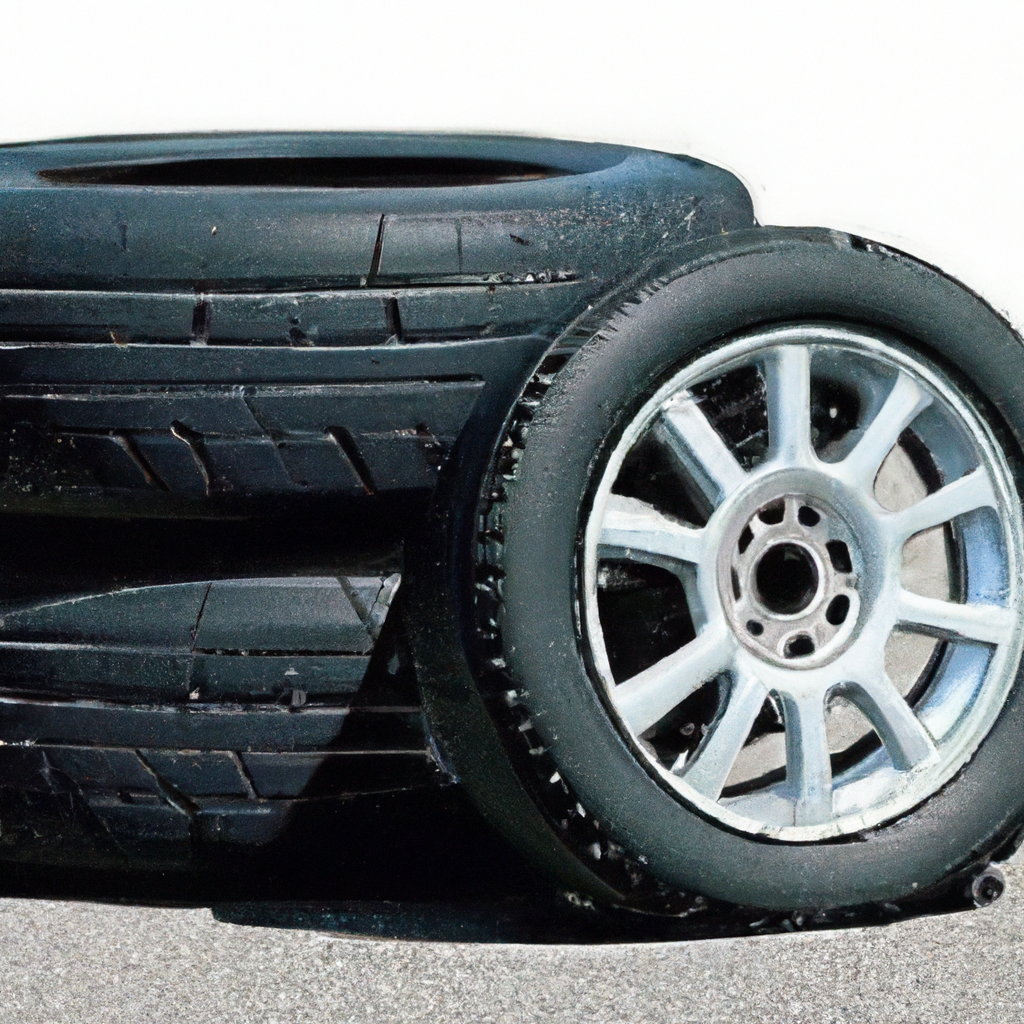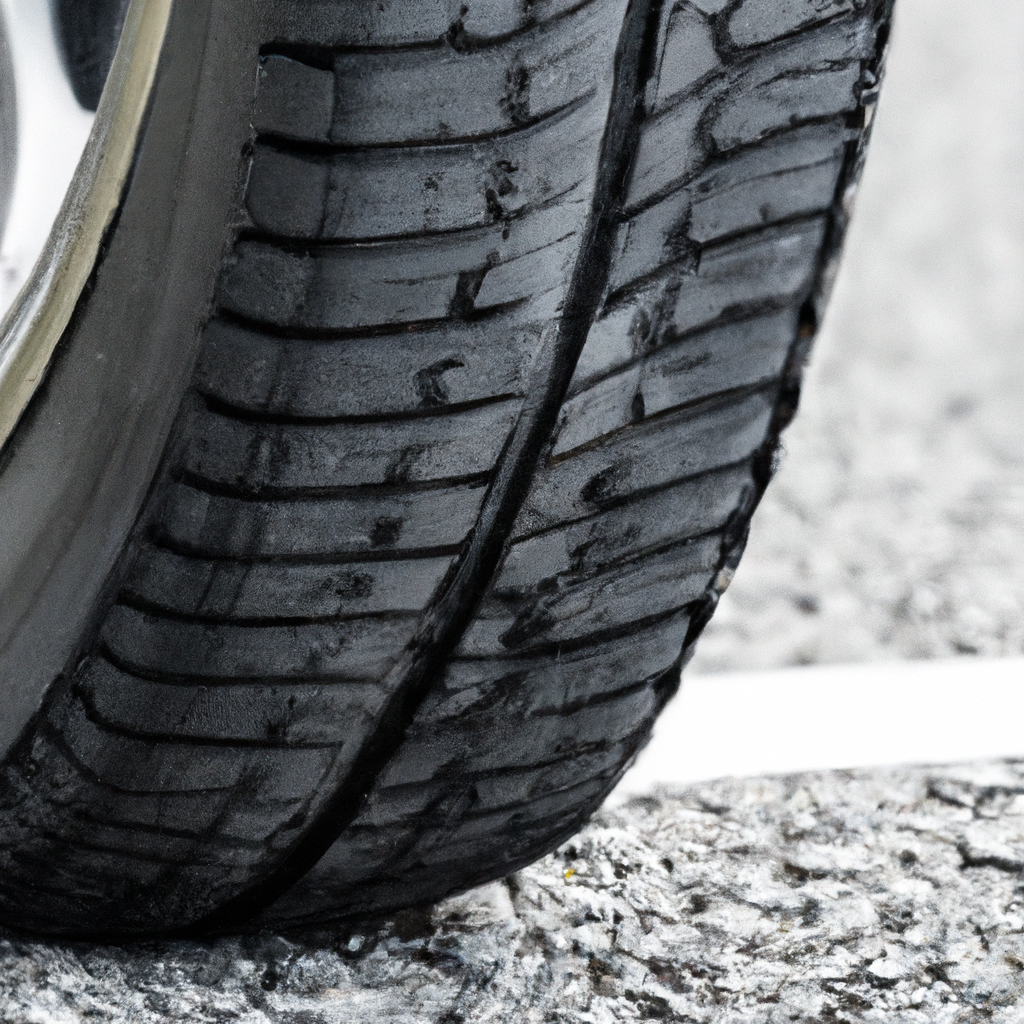Imagine you’re cruising down the highway when, out of nowhere, a reckless driver swerves into your lane. Your heart races as you quickly react, swerving to avoid a collision. In moments like these, the performance of your tires can make all the difference. But have you ever wondered how run-flat tires measure up during emergency maneuvers? These innovative tires have been designed to keep you safe even after a puncture, but do they truly deliver? Let’s take a closer look at how run-flat tires perform when you need them the most.
Performance of Run-Flat Tires
Run-flat tires have gained popularity in recent years due to their unique capabilities and performance advantages. In this article, we will delve into the various aspects of their performance, from stability and control to braking and steering, as well as their handling during cornering.
Stability and Control
One of the key benefits of run-flat tires is their ability to maintain stability and control, even in emergency situations. With their reinforced sidewalls and specialized construction, these tires allow you to continue driving for a limited distance at a reduced speed, even after a puncture or loss of tire pressure. This feature not only provides a greater sense of security but also helps to prevent loss of control, particularly in situations such as sudden tire deflation.
Impact on Braking
When it comes to braking performance, run-flat tires offer a significant advantage. Due to their reinforced sidewalls, these tires maintain their shape and rigidity even when deflated. This allows for better contact between the tire and the road, resulting in improved braking efficiency. In emergency braking situations, run-flat tires can provide enhanced control and reduce stopping distances, giving you peace of mind and increased safety.
Effect on Steering
Run-flat tires also excel in terms of steering response. The reinforced sidewalls of these tires ensure that they remain sturdy even when punctured or deflated. This improves the overall handling and responsiveness of the vehicle, allowing you to maintain control and maneuverability in critical situations. With run-flat tires, you can navigate obstacles and make necessary steering adjustments with confidence, contributing to a safer driving experience.
Handling during Cornering
Cornering performance is another area where run-flat tires showcase their capabilities. With their unique construction, these tires offer improved stability and grip during turns. The reinforced sidewalls help to maintain the tire’s shape, ensuring maximum contact with the road surface. This translates to better traction and enhanced control when cornering at high speeds or on slippery surfaces. Run-flat tires allow you to confidently tackle sharp turns and maintain precise control, contributing to a smoother and safer driving experience.

Factors Affecting Performance
While run-flat tires offer numerous advantages, their performance can also be influenced by several factors. Understanding these factors can help optimize their performance and ensure a safe driving experience.
Tire Design
The design of run-flat tires plays a crucial role in their overall performance. Each manufacturer may have their unique design features, including the materials used, tread pattern, and reinforcement method. It is essential to choose tires that align with your vehicle’s specifications and driving needs to achieve optimal performance.
Tire Pressure
Proper tire pressure is vital for the performance of run-flat tires. These tires are designed to operate with reduced air pressure after a puncture, allowing you to continue driving to a safe location. However, maintaining the recommended air pressure when the tires are not punctured is equally important. Adequate tire pressure ensures optimal performance and longevity, so regular checks and adjustments are crucial.
Vehicle Suspension
The suspension system of your vehicle plays a significant role in the performance of run-flat tires. A well-maintained suspension system helps to distribute the vehicle’s weight evenly, reducing stress on the tires. Additionally, properly functioning shocks and struts contribute to a smoother ride and better handling, enhancing the overall performance of run-flat tires.
Road Conditions
Just like conventional tires, run-flat tires can be affected by the road conditions on which they are driven. Poorly maintained roads, potholes, and debris increase the risk of punctures and damage. It is essential to drive cautiously, avoiding hazards when possible, to mitigate potential tire damage and maintain optimal performance.

Comparison with Conventional Tires
Now, let us compare the performance of run-flat tires with that of conventional tires. While both have their respective advantages and disadvantages, run-flat tires have several noteworthy features that might make them a more appealing choice for certain drivers.
Emergency Braking
In terms of emergency braking, run-flat tires outperform conventional tires. The reinforced sidewalls of run-flat tires allow for better stability and control during sudden stops. In contrast, conventional tires are more prone to deflation and loss of control, especially when faced with a puncture. Run-flat tires provide a safer solution for an abrupt halt in emergency situations.
High-Speed Turns
When it comes to high-speed turns, run-flat tires offer superior performance compared to conventional tires. The reinforced sidewalls and advanced construction of run-flat tires enhance stability and grip, allowing for better maneuverability and control while cornering. This advantage becomes particularly significant when driving at higher speeds, where maintaining control over the vehicle is essential for safety.
Puncture Resistance
One of the key advantages of run-flat tires is their puncture resistance. With their reinforced sidewalls and self-supporting design, these tires can withstand punctures and continue operating even with a loss of pressure. This eliminates the immediate need to change or repair the tire, providing convenience and peace of mind. In contrast, conventional tires are more susceptible to punctures and require immediate attention.
Ride Comfort
While run-flat tires excel in terms of safety and performance, they may compromise slightly on ride comfort compared to conventional tires. The reinforced sidewalls that provide their unique capabilities can result in a stiffer ride. However, advancements in tire technology have significantly improved ride comfort in run-flat tires, making them a viable option for those seeking a balance between safety and comfort.

Manufacturer Recommendations
To ensure optimal performance and longevity of run-flat tires, it is important to follow the manufacturer’s recommendations. These recommendations cover a range of crucial aspects, from tire installation to regular inspections and maintenance procedures.
Proper Installation
To maximize the performance of run-flat tires, they should be installed correctly by a qualified technician. Improper installation can lead to various issues, including reduced tire life, compromised safety, and potential damage to the tire or vehicle. Adhering to the manufacturer’s installation guidelines ensures the tire is fitted securely and maintains all its intended features.
Regular Inspections
Regular inspections become even more vital when using run-flat tires due to their unique characteristics. It is recommended to inspect the tires for any signs of damage, wear, or deflation regularly. This includes checking for punctures, uneven wear, and maintaining the proper air pressure. Promptly addressing any issues ensures the continued performance and safety of the tires.
Maintenance Procedures
Run-flat tires require maintenance procedures similar to conventional tires, with additional attention to their self-supporting capabilities. Regular rotation, balancing, and alignment are crucial for even wear and optimal performance. It is essential to follow the manufacturer’s maintenance recommendations, including specific instructions for run-flat tires, to extend their lifespan and ensure their continued reliability.
Tire Replacement
Eventually, even run-flat tires will reach the end of their lifespan. It is crucial to replace them with new tires of the same type and specifications recommended by the manufacturer. Replacing run-flat tires with conventional ones may compromise the overall performance and safety features of the vehicle. Following the manufacturer’s guidelines for tire replacement ensures the continued benefits of run-flat tires.

Real-Life Testimonials
To illustrate the performance and benefits of run-flat tires, let’s explore some real-life testimonials from drivers, expert opinions, and institutional evaluations.
Driver Experiences
Many drivers who have used run-flat tires have reported positive experiences. They appreciate the ability to continue driving safely after experiencing a puncture or tire pressure loss. Drivers have shared how run-flat tires have allowed them to reach a safe location rather than being stranded on the side of the road. The enhanced stability and control in emergency situations have given them peace of mind and increased confidence behind the wheel.
Expert Opinions
Experts in the automotive industry have also praised run-flat tires for their performance capabilities. They highlight the improved safety features and reduced risk of accidents associated with tire failures. Experts agree that run-flat tires offer a viable solution for drivers who prioritize safety and are willing to trade off some elements of ride comfort. They emphasize the importance of following manufacturer guidelines and proper maintenance to optimize performance.
Institutional Evaluations
Various institutions and organizations have conducted evaluations and tests on run-flat tires. These evaluations have consistently demonstrated the enhanced performance and safety benefits of run-flat tires, supporting the claims made by manufacturers and drivers. The results show improved stability, control, and reduced stopping distances during emergency situations. Such evaluations provide valuable insights and further validate the effectiveness of run-flat tires.
In conclusion, run-flat tires offer significant performance advantages in terms of stability, control, braking, and handling during emergency maneuvers. Factors such as tire design, tire pressure, vehicle suspension, and road conditions can influence their performance. When compared to conventional tires, run-flat tires excel in emergency braking, high-speed turns, puncture resistance, and provide a balance between safety and ride comfort. Following manufacturer recommendations for proper installation, regular inspections, maintenance procedures, and tire replacement is essential to optimize the performance and longevity of run-flat tires. Real-life testimonials from drivers, expert opinions, and institutional evaluations collectively support the positive performance and benefits of run-flat tires, making them a viable choice for drivers prioritizing safety and control.


